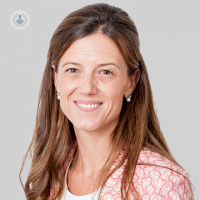Rosacea: redness of the face
Written by:Rosacea is a chronic dermatitis of the facial region characterized by two major alterations:
- Vascular alteration: it produces episodes of redness in the form of flushing, which in many cases leads to persistent erythema or cuperosis and to the appearance of teleangiectasias.
- Inflammatory disorders: they manifest in the form of outbreaks with appearance of granules of papules and pustules in a similar way to acne.
These lesions are located mainly at the central facial level, affecting cheeks, nose, chin and forehead. In addition, the skin is sensitive and reactive, with some difficulty in tolerating usual cosmetics.
What causes rosacea?
Several factors contribute to the appearance of outbreaks and to the progression of erythema, with the most frequent being abrupt changes in temperature, sun exposure, ingestion of spicy foods or alcoholic beverages, and stress. The prevalence is not well known but it is estimated that it can affect around 3-10% of the population. It appears preferentially in women, although possibly this is due to the greater facility of women to consult about the aesthetic alteration that it produces. The age of onset is usually between 30 and 50 years, although it can appear at any age.

Treatment of rosacea
Since there is no treatment that solves the problem definitively, it is aimed at controlling the outbreaks, slowing the progression of erythema and improving the appearance in the skins that already present this redness and teleangiectasias. Thus, it is important to consult with a specialist in Dermatology before starting treatment.
Inflammatory lesions are treated with topical or oral antibiotics depending on their severity, achieving good control of the outbreak. More severe or resistant cases may need oral isotretinoin at low doses for a prolonged time, which although it does not have a curative effect on rosacea, obtains an extended remission in many cases.
For erythema we have topical drugs with vasoconstricting effect, with a duration of approximately eight hours after its application, however many skins do not tolerate because they are somewhat irritating.
The pulsed dye laser , created specifically for the treatment of vascular lesions, together with intense pulsed light (IPL) can dramatically improve erythema of the skin and veins. In many cases, this type of laser can be used in conjunction with topical or oral treatments also to induce a more rapid improvement of inflammatory lesions during outbreaks.


